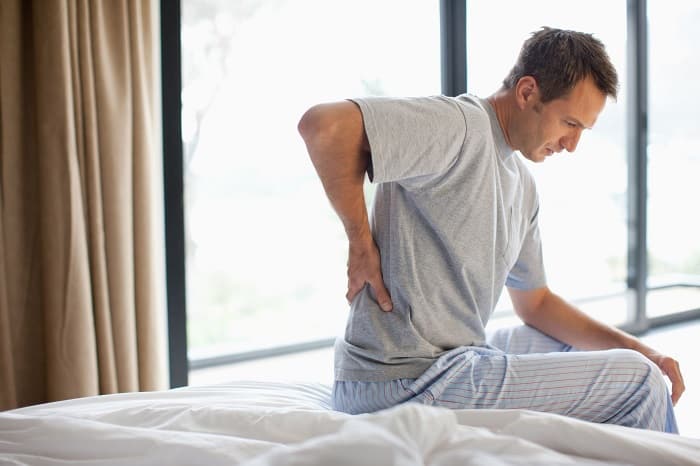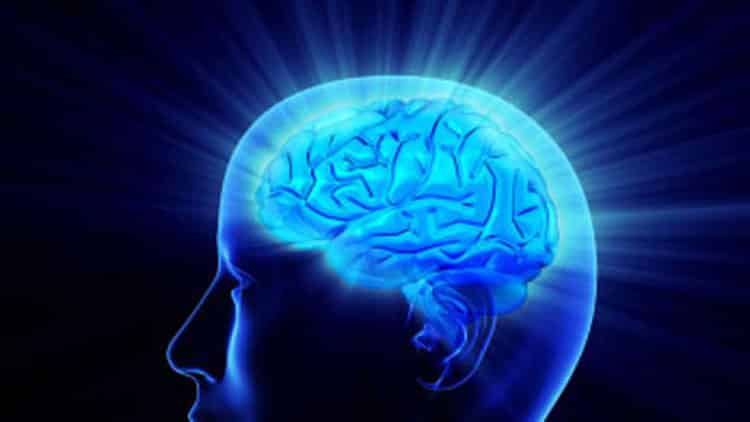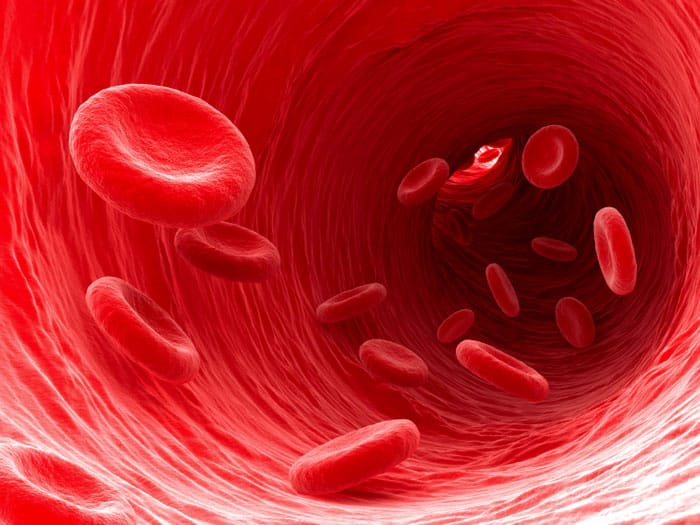Stiff person syndrome: When the body and muscles stiffen completely
Last updated 24/02/2024 by The pain clinics - Interdisciplinary Health
Stiff person syndrome: When the body and muscles stiffen completely

Stiff person syndrome is a rare autoimmune and neurological diagnosis. Stiff person syndrome causes gradually worsening severe muscle spasms and stiffness.
Stiff person syndrome (stiff person syndrome in English) became seriously known to the general public when the media reported that Celine Dion was affected by this disease. The disease is not fatal, but can be extremely disabling and severely affects the quality of life. The diagnosis is primarily classified into 3 different types and degrees of severity.¹ In certain versions of the diagnosis, the person may also experience double vision, balance problems and reduced ability to speak.
note: The condition is very rare - and it is estimated that approximately 1 in 1.000.000 people develop this disease.
Symptoms of stiff person syndrome

Stiff person syndrome is characterized by painful muscle contractions (spasms) that usually affect the legs and back. In addition to this, muscle spasms can also affect the abdominal muscles - and less often in the arms, neck and facial muscles. In addition to this, the condition can cause hyperreactivity and sensitivity to stimuli - such as touch.
- Episodic spasms triggered by cold temperatures and emotional stress
The muscle spasms in stiff person syndrome occur episodically - and especially if the person is surprised or frightened. In addition to this, it is known that cold temperatures and emotional stress can trigger muscle spasms.
- The muscles become like planks
Here it is important to state that we are talking about extreme muscle spasms and contractions. The affected area can be experienced as extremely stiff and 'plank-like'.
The symptoms will vary based on which areas are affected

Stiff person syndrome does not have a completely fixed pattern in relation to the muscles that are affected. Thus, the symptoms can also vary. Symptoms may include:
Difficulty walking or altered gait
A completely rigid posture due to spasms in the back and core
Instability and falls
Shortness of breath (if the syndrome affects the chest muscles)
Chronic pain
Increased back curve (hyperlordosis) due to significant back spasms
Anxiety and afraid to go out
Less common symptoms may include symptoms of double vision, speech difficulties and coordination problems. For some, the diagnosis starts with cramps and stiffness in the legs which gradually get worse and worse.
What causes stiff person syndrome?
It is therefore believed that stiff person syndrome is an autoimmune, neurological disease. This was established in research back in 1991.² Autoimmune conditions mean that the body's own immune system attacks healthy tissue and cells. Like the majority of other autoimmune diseases, women are more often affected than men.
– Unique antibodies associated with stiff person syndrome
Evidence for an autoimmune origin includes the finding of antibody in the spinal fluid of people with this disease. This antibody is called anti-GAD65 – and blocks an enzyme called glutamic acid decarboxylase (GAD). The latter enzyme is directly involved in making the neurotransmitter (nerve signaling substance) gamma-aminobutyric acid (GABA). GABA is directly involved in enhancing the brain waves associated with a relaxed state and peace of mind. The antibodies in stiff person syndrome thus block / destroy this neurotransmitter.
Our clinic departments at Vondtklinikkene (click here for a complete overview of our clinics), including in Oslo (Lambert seats) and Viken (Eidsvoll Sound og Raw wood), has a distinctively high professional competence in the investigation, treatment and rehabilitation of pain in muscles, tendons, nerves and joints. Toe contact us if you want help from publicly authorized therapists with expertise in these fields.
GABA and its role in stiff person syndrome

GABA is an inhibitory neurotransmitter that works in our nervous system – including the brain. This means that it inhibits the discharge of nerve impulses. Can you imagine what happens if we reduce the natural content of this neurotransmitter in the nervous system?
Lack of GABA results in increased nerve impulses
When we reduce the GABA content in the body, we will get increased nerve impulses - and this will in turn trigger muscle contraction. Which in turn leads to spasms and involuntary muscle contractions. Not least, a lack of GABA will also make us more sensitive to sensory and physical stimuli. In the form of hypersensitivity or allodynia.
Exercise and GABA
Exercise and movement are essential methods of increasing GABA levels in the body. Studies have shown that both walking and yoga have a positive effect on these levels.³ Light exercise, for example with elastic bands, is also a safe and gentle way of physical exercise that is suitable for the vast majority of patient groups.
Recommendation: Training with elastic band (link opens in a new browser window)
For people who are sensitive to exercise, exercise with elastic bands is recommended. In fact, this form of training has documented positive effects for people with fibromyalgia, among others (read: Fibromyalgia and elastic training). Press the image or here to learn more about the pilates band.
Diet and GABA
Studies show that probiotic foods, i.e. which stimulate the good intestinal bacteria, can help to increase the content of GABA. A study published in the Journal of Food Science and Technology shows that the following foods have a high content of probiotics:4
Kefir
yoghurt
Cultured milk
Cheese
Sourdough
Olives
Sour cucumber
Kimchi
Especially kefir, yogurt and cultured milk are well-known sources of probiotics. They also have a low pH value, which is particularly favorable for the good intestinal bacteria.
"Here it is important to mention that diet is quite subjective - and that it can be useful to get guidance from a professional nutritionist if you feel that you are experiencing major problems with diet."
Medicinal treatment of stiff person syndrome
People with stiff person syndrome are treated comprehensively with physiotherapy, dietary advice, stress reduction – and drug treatment. As with other autoimmune diagnoses, immunosuppressive drugs that reduce the activity of the immune system are common. In addition to this, they also usually receive prescription muscle relaxants.
Diagnosis of stiff person syndrome

Stiff person syndrome is an extremely rare and complicated condition. As mentioned, it is estimated that it affects 1 per 1 million people. Here it is important to mention that many of the symptoms and clinical signs of stiff person syndrome can overlap with other, more well-known, chronic conditions (such as Parkinson's). Primarily, there are two diagnostic methods used to diagnose this autoimmune condition:
Blood tests
A blood test will be able to reveal whether you have a high content of the antibody anti-GAD65. In addition, blood samples are used to check for other diseases or deficiencies.
Electromyography (EMG)
This is a test that measures electrical activity in muscles using electrodes. In the case of stiff person syndrome, it will be assessed, among other things, whether the muscle contracts, when it should really be relaxed.
- Pain clinics: We can help you with pain in muscles and joints
Our publicly authorized clinicians at our affiliated clinics The pain clinics has a distinctive professional interest and expertise in the investigation, treatment and rehabilitation of muscle, tendon, nerve and joint ailments. We work purposefully to help you find the cause of your pain and symptoms - and then help you get rid of them.
Summary: Stiff person syndrome
One of the most important things to get across here is that this is an extremely rare condition. Several other diagnoses can produce similar symptoms and clinical signs. But of course we recommend that if you suffer from regular muscle spasms, stiffness and similar symptoms, you must of course be examined and get help with this, including through your GP and physical therapist.
VIDEO: 5 exercises against back stiffness
Against the background of the subject in this article, we show here five exercises against back stiffness. Such stiffness can, among other things, be due to osteoarthritis and changes in joint wear and tear in the relevant area of the back.
Join our rheumatism and chronic pain support group
Feel free to join the Facebook group «Rheumatism and Chronic Pain - Norway: Research and news» (Press here) for the latest updates on research and media articles on rheumatic and chronic disorders. Here, members can also get help and support - at all times of the day - through the exchange of their own experiences and advice. Otherwise, we would greatly appreciate it if you would follow us on the Facebook page and Our Youtube channel (the link opens in a new window).
Please share to support those with rheumatism and chronic pain

Hello! Can we ask you a favor? We kindly ask you to like the post on our FB page and to share this article on social media or via your blog (please link directly to the article). We are also happy to exchange links with relevant websites (contact us on Facebook if you want to exchange links with your website). Understanding, general knowledge and increased focus is the first step towards a better everyday life for those with rheumatism and chronic pain diagnoses. So we hope that you will help us with this battle of knowledge!
The pain clinics: Your choice for modern interdisciplinary health
Our clinicians and clinic departments always aim to be among the top elite in the field of investigation, treatment and rehabilitation of pain and injuries in muscles, tendons, nerves and joints. By pressing the button below, you can see an overview of our clinics - including in Oslo (incl Lambert seats) and Viken (Raw wood og Eidsvoll Sound).
Sources and Research
1. Muranova et al, 2023. Stiff Person Syndrome. StatPearls [Internet]. Treasure Island (FL): StatPearls Publishing; 2023 Jan. 2023 Feb 1. [StatPearls / PubMed]
2. Blum et al, 1991. Stiff-person syndrome: an autoimmune disease. Mov Disord. 1991;6(1):12-20. [PubMed]
3. Streeter et al, 2010. Effects of Yoga Versus Walking on Mood, Anxiety, and Brain GABA Levels: A Randomized Controlled MRS Study. J Altern Complement Med. 2010 Nov; 16(11): 1145–1152.
4. Syngai et al, 2016. Probiotics – the versatile functional food ingredients. J Food Sci Technol. 2016 Feb; 53(2): 921–933. [PubMed]
Article: Stiff person syndrome: When the body and muscles stiffen completely
Written by: Our publicly authorized chiropractors and physiotherapists at Vondtklinikkene
Fact check: Our articles are always based on serious sources, research studies and research journals - such as PubMed and the Cochrane Library. Please contact us if you spot any errors or have comments.
FAQ: Frequently asked questions about stiff person syndrome
1. How many are affected by stiff person syndrome?
It is estimated that as few as 1 in 1.000.000 people are affected by this autoimmune, neurological condition. The diagnosis became seriously known to the general public when it was clear that Celine Dion had been diagnosed with this disease.







Leave a reply
Want to join the discussion?Feel free to Contribute!